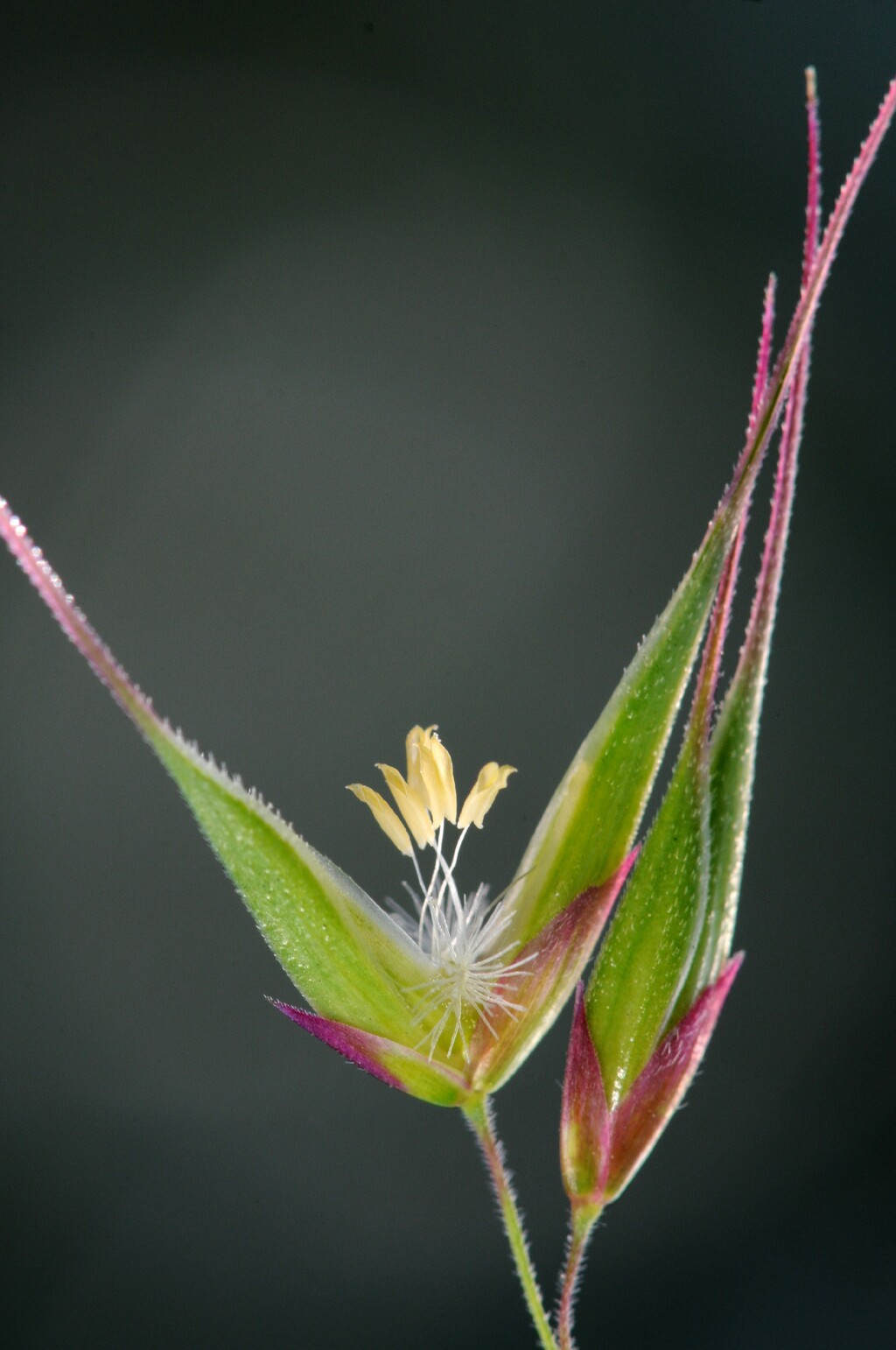Ehrharta longiflora
Sm. Annual Veldt-grassTufted annual, culms erect to 90 cm high. Leaf-blades flat, to 40 cm long, 5–25 mm broad, margins minutely scabrous, often undulate toward base; ligules membranous, toothed, 1–4 mm long. Inflorescence a slender panicle, usually 8–15 cm long. Spikelets drooping, 10–28 mm long; glumes less than half as long as spikelet, the lower acute to acuminate, the upper slightly longer than lower, obtuse, sometimes shallowly toothed at apex with a narrow central point, both usually purplish, glabrous or sparsely hairy; sterile lemmas awned for about half their length, the lower slightly shorter than upper, both scabrous at least apically, sometimes transversely ribbed, obscurely 7-nerved, with small hair-tufts near base; fertile lemma 6–8 mm long, remaining enclosed in upper sterile lemma. Flowers mainly Aug.–Dec
LoM, MuM, Wim, GleP, VVP, VRiv, RobP, MuF, GipP, OtP, WaP, Gold, CVU, GGr, DunT, NIS, EGL, EGU, WPro, HSF, HNF, OtR, Strz. All States except NT, Tas. Native to southern Africa. Occurs on sandy or alluvial soils, often abundant on neglected urban sites.
Walsh, N.G. (1994). Poaceae. In: Walsh, N.G.; Entwisle, T.J., Flora of Victoria Vol. 2, Ferns and Allied Plants, Conifers and Monocotyledons, pp. 356–627. Inkata Press, Melbourne.
 Spinning
Spinning




